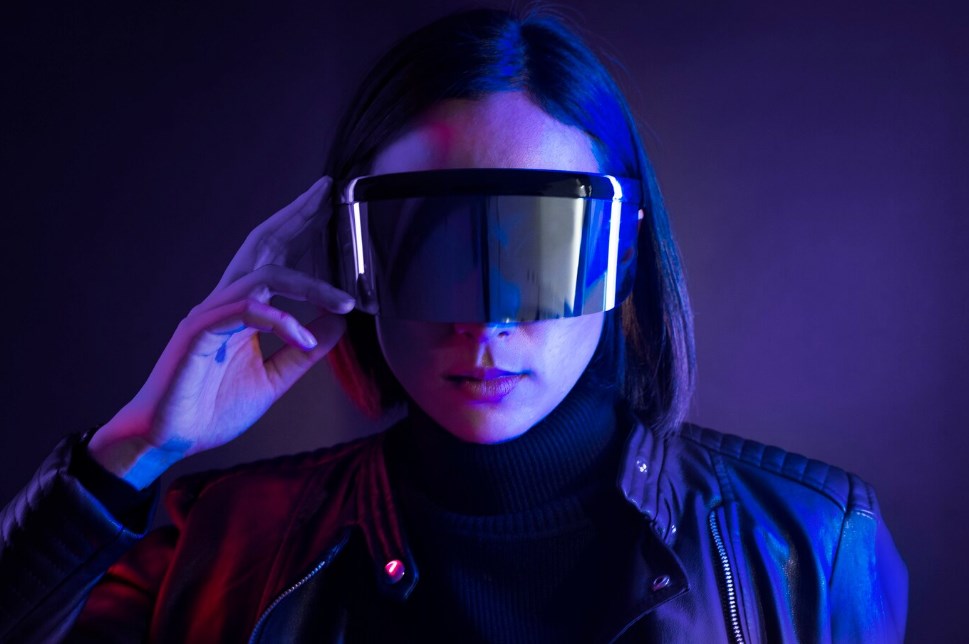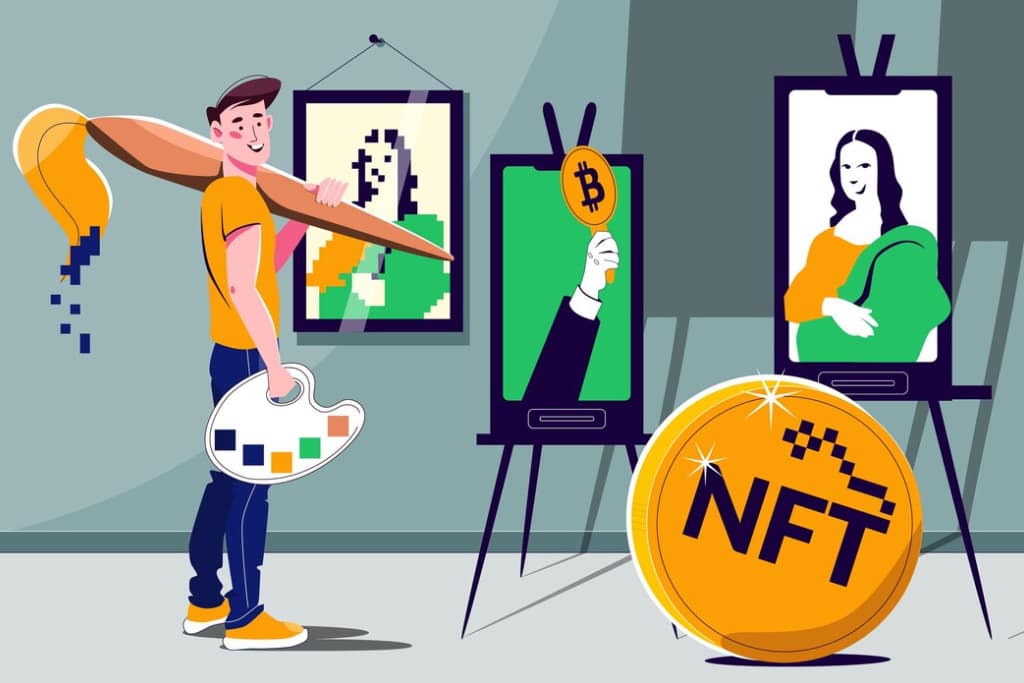The intersection of fashion and technology has ushered in an era of digital couture, redefining the boundaries of style and ownership in the virtual world. This article delves into the burgeoning domain of NFT (Non-Fungible Token) wearables, a fascinating blend of high fashion, artistry, and blockchain innovation.
Here, we explore the intricacies of this trend, its impact on the industry, and its growing appeal among a tech-savvy audience. From exclusive collections by renowned designers to the environmental implications of virtual clothing, this piece provides a comprehensive insight into the future of style in the realm.
The Metaverse Fashion Revolution
The vogue industry is witnessing a seismic shift, thanks to the advent of NFT wearables. Renowned luxury houses like Louis Vuitton, Valentino, and Burberry are leading this digital renaissance, offering exclusive virtual apparel and accessories.
Unlike tangible items, these creations exist solely in the metaverse, a burgeoning universe of virtual worlds. This trend has seen a significant rise, mirroring social media’s influence in setting stylish trends.
NFT wearables stand out for their unique blend of personal branding and interactivity, enhanced by advanced virtual and augmented reality technologies. These virtual pieces offer an unprecedented level of engagement, allowing users to not only showcase their style but also interact in immersive virtual environments.
Grasping the Concept of NFT Fashion Items
Trendy NFT items are unique, non-tangible garments and accessories used to enhance the appearance of digital personas. Utilizing blockchain technology and intelligent contracts, these items establish their rarity and confirm their rightful ownership, effectively addressing the issue of imitation in the world. These items are more than mere virtual possessions; they symbolize an innovative juncture in the realms of style and technological advancement.
This trend of ‘blockchain fashion’ is gaining traction, with numerous brands diving into the creation of collectible digital wardrobes, often in partnership with famous personalities and influential figures. This trend isn’t a recent phenomenon – online gaming and simulations have incorporated virtual outfits for many years. Nonetheless, the concept takes on a new dimension in the metaverse, providing a platform for heightened personalization and creative expression.
The Rise of NFT-Based High Fashion
The lucrative potential of NFT-based high fashion has garnered the interest of prestigious vogue houses, with market predictions estimating its value at $56 billion by 2030. Prominent labels like Louis Vuitton and Burberry are pioneers in this field, introducing their own interactive metaverse experiences and forming alliances with well-known virtual platforms. Such initiatives have sparked enthusiasm, prompting other leading labels like Adidas, Nike, GAP, and Crocs to introduce their virtual style lines.
The sentimental bond people have with their attire is finding a new avenue in the metaverse, paving the way for interactions with clothing that mirror real-world experiences.
The Distinct Allure of NFT Items
NFT items connect profoundly with the aspiration for unique self-expression within the metaverse. They enable users to break free from real-world limitations, unlocking limitless creative possibilities. Designers can now craft outfits from imaginative and unreal materials like liquid gold or mystical smoke, providing an innovative platform for artistic creation. These virtual outfits also promote inclusivity, accommodating various body shapes and sizes, and supporting unisex concepts.
The affordability and easy access to these high-end stylish alternatives are major benefits. Designers have the opportunity to explore new revenue streams by incorporating royalties in their virtual designs. Furthermore, NFT items offer an environmentally conscious choice compared to traditional fast fashion, contributing to significant reductions in environmental damage. However, it’s important to consider the environmental footprint of NFTs themselves.
Evolving Online Marketplaces and Brands in the Sphere of NFT Fashion Items
In the realm of online gaming, a precursor to evolving fashion trends has been well-established, with players frequently updating their virtual identities by acquiring unique features such as distinctive armaments, extraordinary abilities, aesthetic upgrades, and ‘skins’. Notably, these skins have created a significant market, valued at approximately $40 billion per year, highlighting the immense possibilities of NFT fashion items.
- Consider the example of Fortnite: this popular game amassed an impressive $50 million from a unique collection of NFT-themed skins in just one year. Currently, this tendency is swiftly transitioning into the metaverse, exemplified by platforms like Decentraland and The Sandbox, where exceptionally fashionable avatars are the norm;
- The industry, with leading names like Vogue magazine, is rapidly adopting this trend. The September 2021 edition of Vogue Singapore notably showcased NFT items on its cover, marking a significant step in integrating non-physical attire into the mainstream fashion narrative. This gesture underscores the growing significance and undeniable influence of NFTs within the modern fashion sector;
- Furthermore, the metaverse is venturing into partnerships with artists to augment the user experience. For example, Sensorium Galaxy collaborated with Jason Ebeyer, a celebrated 3D artist, to craft avatars reflecting his distinctive, lustrous style. In Sensorium Galaxy, users have the opportunity to personalize their avatars using a selection of fashion items and accessories from Sensorium’s online ‘lookbook’. An early glimpse of these avatars and their personalization options is presently available via the Sensorium App.
Additionally, NFT fashion items are now readily available for acquisition or through partnerships with elite fashion brands and dedicated NFT marketplaces.
Pioneering Digital Fashion NFT Brands
- The Fabricant: A trailblazer in virtual fashion, The Fabricant, an Amsterdam-based digital fashion house, is known for its avant-garde designs and collaborations with brands like Puma and Iris Van Herpen. It was one of the first to integrate blockchain technology in fashion, offering unique, owner-centric experiences;
- Auroboros: Auroboros stands out with its biomimicry fashion ethos, blending science and high style. The brand is synonymous with futuristic metaverse apparel, including its standout pieces like Neuro necklaces and Nymph bags, marking a new era in the couture;
- RTFKT Studios: This brand made headlines for its rapid sale of NFT sneakers, generating over $3 million in mere minutes. Following successful collaborations with artists like Takashi Murakami and being acquired by Nike, RTFKT Studios is poised for more groundbreaking releases, including their recent “MNLTH” drop;
- Republiqe: Renowned as the first virtual-only luxury brand, Republiqe specializes in creating stunning virtual garments. The brand emphasizes personalization, offering digital tailoring to ensure the perfect fit for each unique avatar, exemplified by their bespoke puffer jacket and dress set launched on World Health Day.
Prominent Digital Fashion NFT Marketplaces
- The Dematerialised: An exclusive virtual style marketplace, The Dematerialised has collaborated with top-tier brands like Karl Lagerfeld and McQ. Known for its rapid sell-out NFT collections, it offers access to a range of brands, including Tribute and RTFKT, catering to the discerning fashion enthusiast;
- DressX: DressX has emerged as a pioneering marketplace under its philosophy of ‘don’t shop less, shop digital,’ offering a diverse range of virtual clothing. This marketplace has distinguished itself by designing in-house collections and forming alliances with renowned brands. A notable collaboration with Crypto.com has enabled DressX to provide its clientele with exclusive, limited-edition drops and unique NFT items, enriching the online wardrobe experience.
Additionally, popular NFT marketplaces like OpenSea and Rarible serve as bustling hubs for discovering, creating, and trading wearable NFTs. These platforms are integral to the wearable NFT ecosystem, offering a wide array of choices for enthusiasts and collectors.
Crafting Your Own Wearable NFTs
Creating wearable NFTs can be both exhilarating and accessible, even for those new to the field. For beginners, platforms like Decentraland provide comprehensive tutorials for designing free wearables, offering a smooth entry into the world of 3D design and modeling.
Beyond gaming and virtual environments, aspiring creators can utilize specialized software such as CLO3D, Marvelous Designer, or Blender to bring their unique collections to life. These tools enable the transformation of digital concepts into tradable NFTs. While having skills in virtual drawing and sketching is beneficial, these platforms offer enough guidance to help even novices create impressive designs.
The Economic and Cultural Impact of Wearable NFTs
- Market Growth: The wearable NFT market is witnessing exponential growth, attracting investors and enthusiasts alike, and leading to a vibrant economy within the metaverse;
- Brand Collaborations: Major brands are increasingly collaborating with artists and NFT platforms, creating unique, limited-edition virtual wearables;
- Cultural Influence: Wearable NFTs are shaping digital culture, influencing trends in virtual fashion and avatar customization;
- User Engagement: These assets enhance user engagement in virtual worlds, offering new ways to express identity and style;
- Inclusivity and Diversity: Virtual vogue breaks barriers, allowing for more inclusive and diverse representation in fashion, irrespective of size, gender, or physical limitations;
- Sustainability: As an alternative, wearable NFTs offer a more sustainable option, reducing the environmental impact associated with traditional clothing production.
The Technological Advancements Behind Wearable NFTs
The realm of wearable NFTs is continuously evolving, driven by advancements in technology. Key developments include:
- Enhanced 3D Graphics: Improvements in 3D graphics and rendering technologies have enabled more realistic and detailed clothing designs;
- Blockchain Innovation: The integration of blockchain technology ensures the authenticity, ownership, and transferability of virtual items;
- Augmented Reality (AR): AR technology allows users to virtually try on and showcase their digital fashion in real-world settings;
- Interoperability: Efforts are being made to ensure wearable NFTs can be used across various virtual worlds and platforms, enhancing their utility and value.
Conclusion
In conclusion, wearable NFTs represent a groundbreaking convergence of fashion, technology, and digital culture. From DressX’s innovative marketplace to individual creators crafting unique pieces using advanced software, the realm of virtual vogue is expanding rapidly. These developments not only offer economic opportunities and creative expression but also signify a shift towards more inclusive and sustainable practices.
Despite facing challenges such as legal controversies and environmental concerns, wearable NFTs are cementing their place as a staple in the metaverse. As this landscape continues to evolve, it promises to mirror and possibly even surpass the vibrancy and diversity of fashion in the physical world. In essence, wearable NFTs are not just a fleeting trend; they are a pivotal aspect of the future of fashion and identity in an increasingly digital society.




